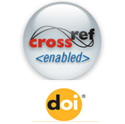|


Bu eser Creative Commons Atıf 4.0 Uluslararası Lisansı ile lisanslanmıştır. .
|
|
|
|
Yazar
|
:
Beyzanur Karakuş
|
|
|
Türü |
:
|
|
Baskı Yılı |
:
2025
|
|
Sayı |
:
93
|
|
Sayfa |
:
16-26
|
|
DOI Number: |
:
|
| Cite : |
Beyzanur Karakuş , (2025). AFİŞ TASARIMINDA RENK, TİPOGRAFİ VE İMGE İNCELEMELERİ. Route Education and Social Science Journal , 93, p. 16-26. Doi: 10.17121/ressjournal.3682.
|
|
277 294
|
Özet
Bu çalışmada, afiş tasarımında renk, tipografi ve imge kullanımının iletişimsel, kültürel ve estetik boyutları ele alınmıştır. Afişin etimolojik kökeni ve tarihsel gelişiminden yola çıkılarak, görsel iletişim aracı olarak taşıdığı işlevler açıklanmıştır. Afişler; sanatsal, ticari ve ideolojik amaçlarla kullanılan, geniş kitlelere hitap edebilen etkili tasarım araçlarıdır. Bu bağlamda, renklerin psikolojik ve kültürel çağrışımları, tipografinin tarihsel evrimi ve anlam üretme biçimi, imgenin ise hem temsil gücü hem de sembolik anlatım potansiyeli değerlendirilmektedir. Özellikle modern tasarım anlayışında, yazı karakterleri yalnızca bilgi aktarım aracı değil, aynı zamanda görsel bir iletişim ögesi olarak kullanılmakta; böylece tipografi, estetik ve işlevsellik arasında köprü kuran bir sanat formuna dönüşmektedir. Araştırmada, afişin görsel öğeleri olan renk, imge ve tipografinin bir araya gelişindeki kompozisyonel denge, izleyici üzerinde bıraktığı etki ve hedef kitleye mesaj iletimi bağlamında önemi vurgulanmış, Marinetti, Tschichold, Troxler ve Bundi’nin tasarımları üzerinden incelenmiştir. Afişin iletişim gücünü artırmak için bu unsurların bilinçli ve yaratıcı biçimde kullanılmasının gerekliliği ortaya konmuştur.
Anahtar Kelimeler
Afiş tasarımı, Renk, Tipografi, İmge, Görsel iletişim, Grafik tasarım.
Abstract
In this study, the communicative, cultural and aesthetic dimensions of the use of color, typography and image in poster design are discussed. Based on the etymological origin and historical development of the poster, its functions as a visual communication tool are explained. Posters are effective design tools that are used for artistic, commercial and ideological purposes and can appeal to large masses. In this context, the psychological and cultural connotations of colors, the historical evolution of typography and the way it produces meaning, and both the representational power and symbolic expression potential of the image are evaluated. Especially in the modern design approach, typefaces are used not only as a means of conveying information but also as an element of visual communication; thus, typography is transformed into an art form that bridges aesthetics and functionality. In the research, the compositional balance in the combination of color, image and typography, which are the visual elements of the poster, the effect it leaves on the audience and its importance in the context of message transmission to the target audience were emphasized and examined through the designs of Marinetti, Tschichold, Troxler and Bundi. The necessity of using these elements consciously and creatively to increase the communication power of the poster is revealed.
Keywords
Poster design, Color, Typography, İmage, Visual communication, Graphic design.
|
|
